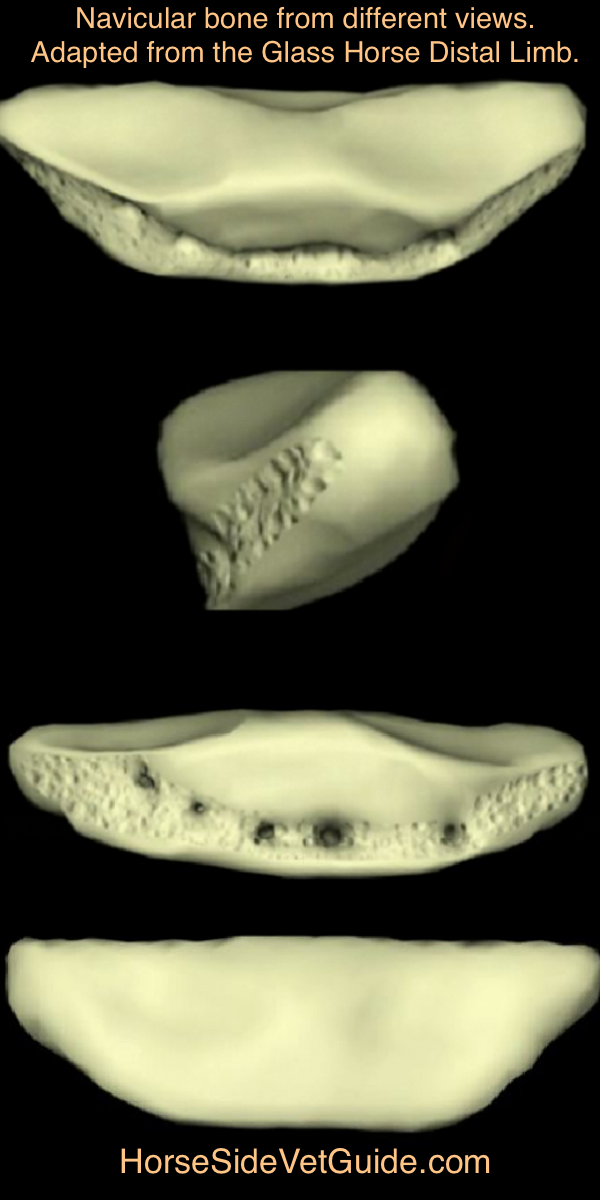

Work involving concussion, especially of the front legs, exacerbates the problem. Navicular syndrome is uncommon in ponies, as well as Arabians. It is likely that wear and tear plays a role in navicular syndrome development. The condition affects sport horses more frequently. Because navicular syndrome is so much higher in these breeds, a genetic component is possible. Incidence of navicular syndrome is highest in quarter horses, thoroughbreds, and warmbloods. Upright pasterns combined with small hooves may contribute to navicular syndrome. However, heavier, stock-type horses appear more vulnerable. Risk FactorsĪny horse may develop navicular syndrome. This type of hoof threatens the soft tissues in the back of the structure. The “classic” navicular presentation is a long toe and low heel combination. Horses with small hooves and large bodies are more likely to experience navicular syndrome. Hoof trauma plays a role in some cases, as can anything interfering with the blood supply to the navicular bone. Navicular Syndrome CausesĮxactly what causes navicular syndrome is uncertain. If such symptoms are involved, they are generally subtle. Navicular syndrome does not normally present with heat in the hoof, an increased digital pulse, or the swelling so frequently found in other hoof lameness. Eventually, waves may appear on the hoof. The horse may end up with a snubbed toe in conjunction with a tall heel derived from stepping toe first. Unlike laminitis, when a horse tries to keep weight off the toe, equines with navicular syndrome try to put their toes down first to avoid weight on their heels.

Becoming uncooperative with the farrier.Suspect navicular syndrome if the horse displays any of the following: What starts as a horse being somewhat “off” progresses over time.

Usually, it is a gradual, intermittent lameness. Rarely, navicular syndrome lameness comes on suddenly. Horses with navicular syndrome exhibit lameness, but it is of a specific type. Under some circumstances, adhesions between the DDFT and the navicular bone may occur. Heel pain can result from anything causing strain on the tendon or interfering with the tendon’s action. As the animal moves, the DDFT is under tension. Over the navicular bone’s lower surface lies the deep digital flexor tendon (DDFT). The navicular bone attaches to the pedal bone via the short impar ligament and to the pastern joint via the suspensory ligaments. The small, flat navicular bone is located at the rear of the heel at the back of the coffin joint. Proper management of the condition can help to improve your horse’s comfort and mobility.īesides the navicular bone, navicular syndrome may involve the: Because it is a degenerative problem, it is not curable. This syndrome may not actually involve the navicular bone per se. Navicular syndrome in the rear hooves is unusual but does occur. Navicular syndrome often results in degeneration of the navicular bone, generally in the front feet.
HORSES NAVICULAR SERIES
The latter term is no longer used since a syndrome (concerning a series of issues) is a more accurate term for the condition than disease. What is Navicular Syndrome?Īlso known as caudal heel pain or podotrochlear syndrome, navicular syndrome was long referred to as navicular disease. Once it has been diagnosed, a number of treatment options are available. Proper hoof care and maintaining a good body condition for senior horses can help to reduce the risk of this condition.

Horses with navicular syndrome may have a shortened stride length, exhibit signs of pain or experience changes in their gait such as toe landing. It may be caused by repetitive mechanical stress on the navicular bone, resulting in degeneration of tissues and ligaments in the heel. It is most commonly seen in competition horses and quarter horses. Navicular syndrome is a chronic degenerative condition that can cause lameness in the front legs. With early diagnosis and proper treatment, a horse with navicular syndrome may still have a useful life for a considerable period of time. It is a common – and frustrating – issue to deal with, but it no longer spells immediate retirement for the horse. Horses exhibiting heel pain are often diagnosed with navicular syndrome.


 0 kommentar(er)
0 kommentar(er)
